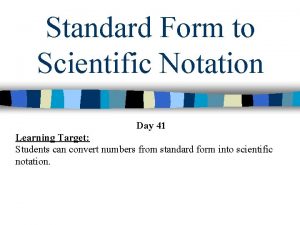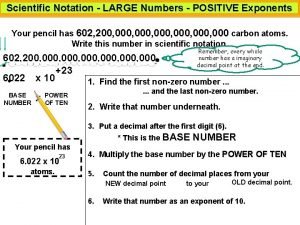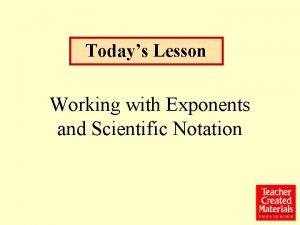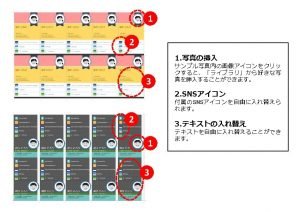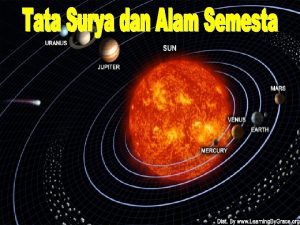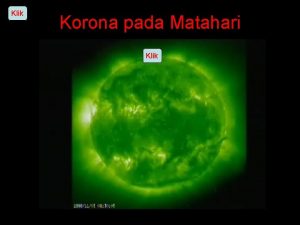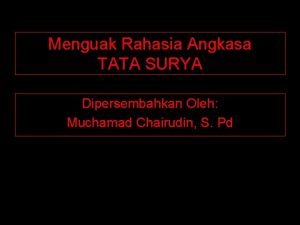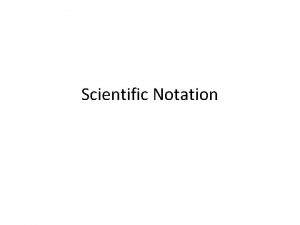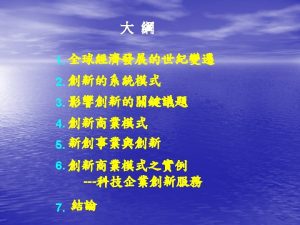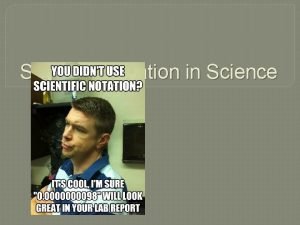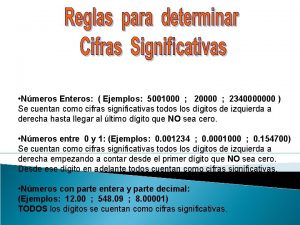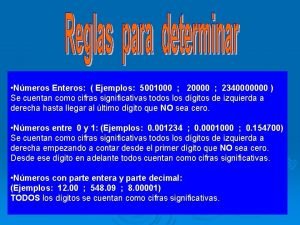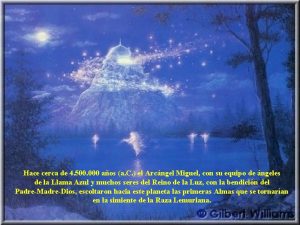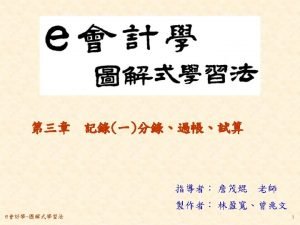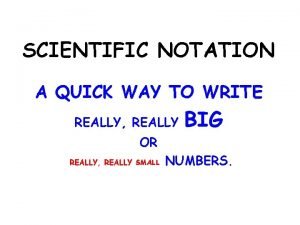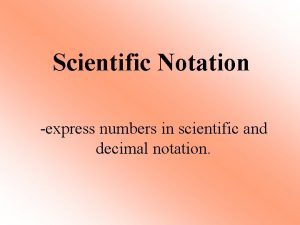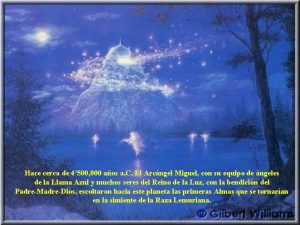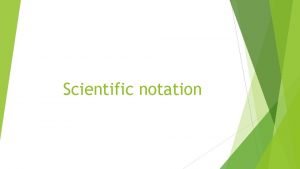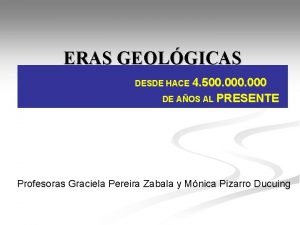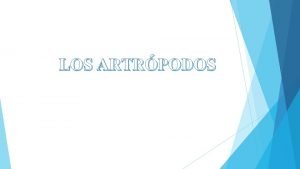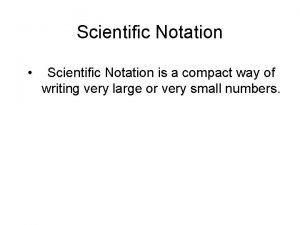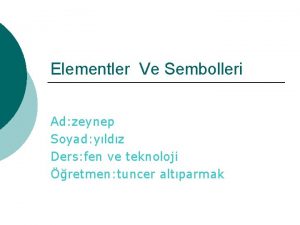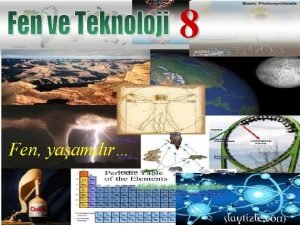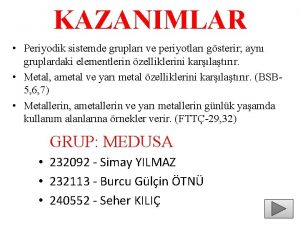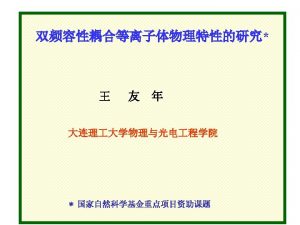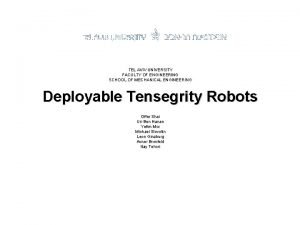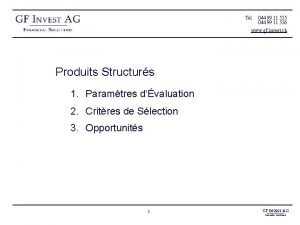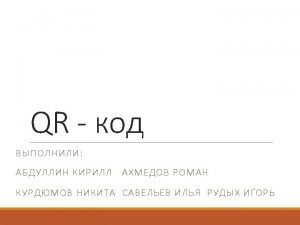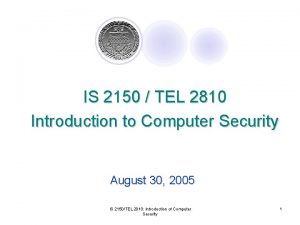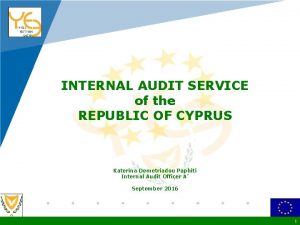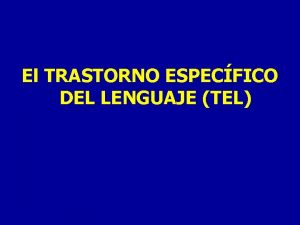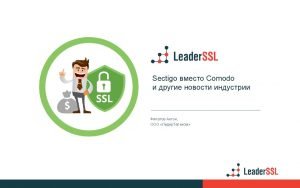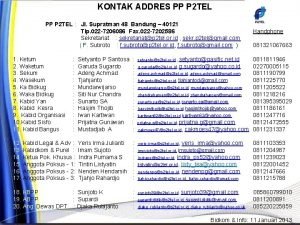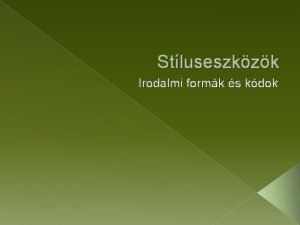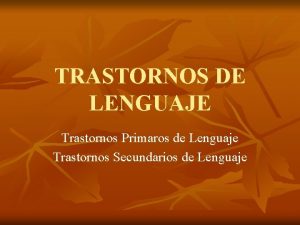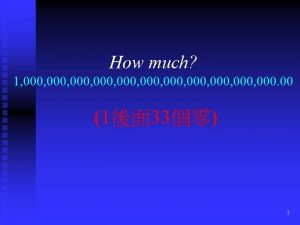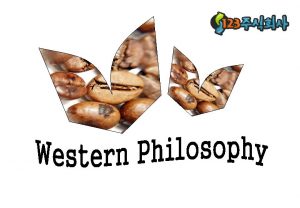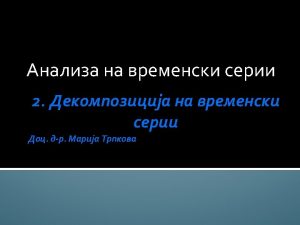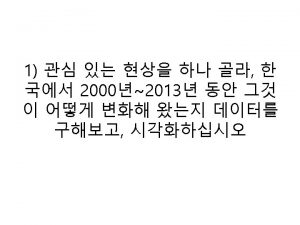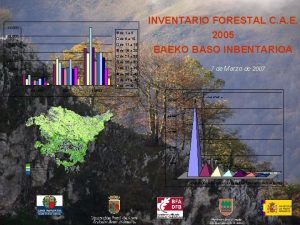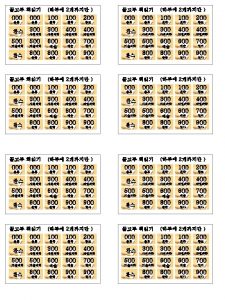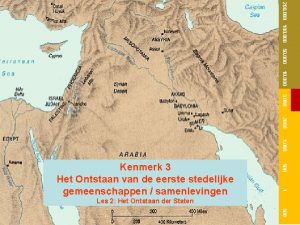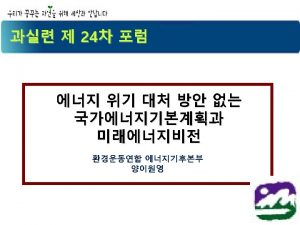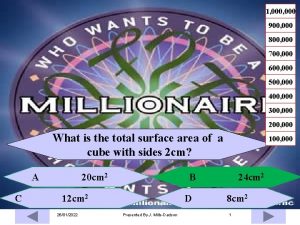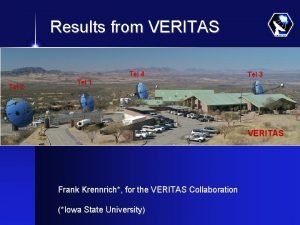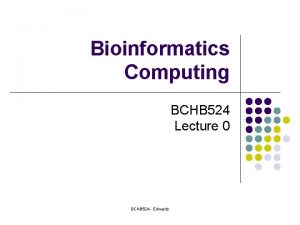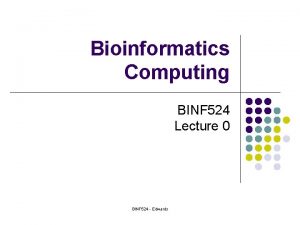Office 524 Tel 13957173448 11252020 3 1 000
















































![The Ski problem [Karp 92]: A skier must decide every day she goes skiing The Ski problem [Karp 92]: A skier must decide every day she goes skiing](https://slidetodoc.com/presentation_image_h/9df54c86447ea71ec13e052ccbab50e0/image-49.jpg)















![Insertion sort “pseudocode” 1 i INSERTION-SORT (A, n) ⊳ A[1. . n] for j Insertion sort “pseudocode” 1 i INSERTION-SORT (A, n) ⊳ A[1. . n] for j](https://slidetodoc.com/presentation_image_h/9df54c86447ea71ec13e052ccbab50e0/image-65.jpg)



- Slides: 68



Office 办公室地点:曹光彪主楼 524 Tel. : 13957173448 11/25/2020 3

$1, 000 problem P = NP ? P = NP http: //www. claymath. org/millennium/ Solved? ? ? !!!! 11/25/2020 4

Examination Scores: 1. Final examination (50%) 2. Two projects (40% ) 3. Attendances & Questions (10%) 11/25/2020 5


Erdős project Paul Erdős(1913 -1996) has an Erdős number of zero. If the lowest Erdős number of a coauthor is X, then the author's Erdős number is X + 1. 11/25/2020 7

Nevanlinna Prize winners NAME YEAR Robert Tarjan 1982 Leslie Valiant 1986 Alexander Razborov 1990 Avi Wigderson 1994 Peter Shor 1998 Madhu Sudan 2002 Jon Kleinberg 2006 11/25/2020 COUNTRY ERDÖS NUMBER USA 2 Hungary/Gt Brtn 3 Russia 2 Israel 2 USA 2 India/USA 2 USA 3 8

Other famous people Albert Einstein 1921 Physics 2 Chen Ning Yang 1957 Physics 4 Tsung-dao Lee 1957 Physics 5 John F. Nash 1994 Economics 4 Edmund S. Phelps 2006 Economics 4 Shing-Tung Yau 1982 China 2 Shiing Shen Chern 1983 -84 China 2 Alan Turing computer science 5 John von Neumann mathematics 3 David Hilbert mathematics 4 Donald E. Knuth 2 11/25/2020 9








A Microsoft interview? 11/25/2020 17


What is algorithm? (Oxford Dict. )Algorithm: A set of rules that must be followed when solving a particular problem. From Math world A specific set of instructions for carrying out a procedure or solving a problem, usually with the requirement that the procedure terminate at some point. An algorithm is any well-defined computational procedure that takes some value, or set of values, as input and produces some value, or set of values, as output. 11/25/2020 19

Algorithm Problem definition 问题 Objective 目标 (very important) Methods 方法 Performance 算法评价 11/25/2020 20

Perspective Algorithms we can find everywhere They have been developed to easy our daily life Train/Airplane timetable schedule Routing We live in the age of information Text, numbers, images, video, audio 11/25/2020 21

Algorithm in daily life Clothes: strip packing Cooking: menu scheduling Accommodation: facility location Traffic: traffic lights 11/25/2020 22

Pricing Water, electrical power pricing: Step pricing Promotion: Hangbai et al. , buy items with total price >= 300, then 60 bonus, but each invoice uses only once. Bin covering, Bin packing, Open – End bin packing problem. 11/25/2020 23

Selfish routing Pigou's Example Suburb s, a nearby train station t. Assuming that all drivers aim to minimize the driving time from s to t C(x) = 1 s 11/25/2020 t C(x) = x, with x in [0, 1] 24

Selfish routing We have good reason to expect all traffic to follow the lower road Social optimal? ½ to the long, wide highway, ½ to the lower road. selfish behavior need not produce a socially optimal outcome 11/25/2020 25

Braess's Paradox C(x) = x v C(x) = 1 s t C(x) = 1 11/25/2020 w C(x) = x 26

Braess's Paradox C(x) = 1 C(x) = 0 s C(x) = 1 11/25/2020 v w t C(x) = x 27

Braess's Paradox thus shows that the intuitively helpful action of adding a new zero-cost link can negatively impact all of the traffic! With selfish routing, network improvements can degrade network performance. 11/25/2020 28

History of Algorithm The word algorithm comes from the name of the 9 th century Persian mathematician Abu Abdullah Muhammad ibn Musa al-Khwarizmi whose works introduced Arabic numerals and algebraic concepts. The word algorism originally referred only to the rules of performing arithmetic using Arabic numerals but evolved into algorithm by the 18 th century. The word has now evolved to include all definite procedures for solving problems or performing tasks. 11/25/2020 29

History – con. The first case of an algorithm written for a computer was Ada Byron's notes on the analytical engine written in 1842, for which she is considered by many to be the world's first programmer. However, since Charles Babbage never completed his analytical engine the algorithm was never implemented on it. This problem was largely solved with the description of the Turing machine, an abstract model of a computer formulated by Alan Turing, and the demonstration that every method yet found for describing "well-defined procedures" advanced by other mathematicians could be emulated on a Turing machine (a statement known as the Church-Turing thesis). 11/25/2020 30

课程内容 1. 数学基础 1. 1 算法基础 1. 2 和 (SUMS) 集合运算 (Sets) 1. 3 特殊数 (Stirling numbers, Harmonic numbers, Eulerian numbers et al. ) 2. 基本算法 2. 1 分治 (Divide-and-Conquer)* 2. 1. 1 Mergesort * 2. 1. 2 自然数相乘(Multiplication)* 2. 1. 3 矩阵相乘(Matrix multiplication) 2. 1. 4 Discrete Fourier transform and Fast Fourier transform 11/25/2020 31

课程内容 2. 2 动态规划 (Dynamic Programming) 2. 2. 1 背包问题(Knapsack problem) 2. 2. 2 最长递增子序列(Longest increasing subsequence) 2. 2. 3 Sequence alignment 2. 2. 4 最长相同子序列(Longest common subsequence) 2. 3. 5 Matrix-chain multiplication 2. 3. 6 树上的独立集 (Max Independent set in tree) 11/25/2020 32

课程内容 2. 3 贪婪算法 (Greedy) 2. 3. 1 区间规划(Interval scheduling) 2. 3. 2 集合覆盖(Set cover) 2. 3. 3 拟阵(Matroids) 2. 4 NP 问题 (NP-completeness) 2. 4. 1 The classes P and NP 2. 4. 2 NP-completeness and reducibility 2. 4. 3 NP-complete problems * 11/25/2020 33

课程内容 2. 5 近似算法 (Approximate Algorithm) 2. 5. 1 顶点覆盖问题 (Vertex cover) 2. 5. 2 负载平衡问题 (Load balancing) 2. 5. 3 旅行商问题 (Traveling salesman problem) 2. 5. 4 子集和问题 (Subset sum problem) 11/25/2020 34

课程内容 3. 算法的应用 3. 1 局部搜索 (Local Search) 3. 1. 1 The Metropolis Algorithm and Simulated Annealing 3. 1. 2 Local Search to Hopfield Neural Networks(Nash Equilibria) 3. 1. 3 Maximum Cut Approximation via Local Search 11/25/2020 35

课程内容 3. 2 图论 (Graph Theorem) 3. 2. 1 图论的基本知识 (Fundamental) 3. 2. 2 线性规划 (Linear Programming) 网络流(Network Flow),二分图,完全图的匹配 3. 3计算几何学 (Computational Geometry) 3. 3. 1 基本概念与折线段的性质 (Line-segment ) 3. 3. 2 线段的一些性质 (Segments intersects ) 3. 3. 3 凸包问题 (Convex Hull ) 3. 3. 4 最近点对问题 (The closet pair of points) 3. 3. 5 多边形三角剖分 (Polygon Triangulation) 11/25/2020 36

课程内容 3. 4 字符串匹配 (String Matching)* 3. 4. 1 字符串匹配的简单算法 3. 4. 2 The Karp-Rabin algorithm 3. 4. 3 Finite automata, The Knuth-Morris-Pratt algorithm 3. 5 随机算法 (Randomized Algorithm) 3. 5. 1 随机变量与期望 3. 5. 2 A Randomized MAX-3 -SAT 3. 5. 3 Randomized Divide-and-Conquer 11/25/2020 37

课程内容 3. 6 组合数学与数论 (Number-Theoretic) 3. 7 高精度 (Big. Nums) 3. 8 数据结构 (Data Structure)* 跳跃链表(Skip list), Fibonacci Heaps, Data Structures for Disjoint Sets 3. 9 矩阵运算/计算数学 (Matrix operations)* 矩阵性质, 矩阵相乘, 解线性方程组, 高斯消去法 *:备选内容 11/25/2020 38

主要参考教材 Introduction to algorithms, Introduction to algorithms Second Edition. Thomas H. Cormen, Charles E. Leiserson, Ronald L. Rivest and Clifford Stein. The MIT Press, 2001. ISBN: 0262032937. Algorithm Design. Jon Kleinberg, Éva Tardos. Addison Wesley, 2005. ISBN: 0 -321 -29535 -8. Rolf Nevanlinna Prize, 06 11/25/2020 39

11/25/2020 40

参考教材 Algorithms. S. Dasgupta, C. H. Papadimitriou, and U. V. Vazirani. May 2006. Combinatorial Algorithms. Jeff Erickson. University of Illinois, Urbana-Champaign. Lecture Notes. Fall 2002. Concrete Mathematics Ronald L. Graham, Donald E. Knuth, Oren Patashnik. Addison-Wesley Publishing Company, 2005. ISBN: o-201 -14236 -8. 数据结构与算法 – Data structures and algorithms. A. V. Aho J. E. Hopcroft, J. D. Ullman. 清华大学出版社, 2003. 算法艺术与信息学竞赛. 刘汝佳 黄亮. ISBN 7 -302 -07800 -9, 清华 大学出版社, 2004. 计算几何—算法分析与设计 周培德. 清华大学出版社ISBN 7 -302 -03801 -5, 2000. 11/25/2020 41


Tools? 11/25/2020 43

Requirement Come to the class (*) Ask questions Thinking: Why it is ok now? How about other methods? 11/25/2020 44

Algorithms in Computer Science P = NP ? P = NP Can we solve a problem efficiently? Tradeoff between quality of solution and the running time Solve a problem with optimal solution, but it might cost long time Solve a problem approximately in short time 11/25/2020 45

Example Trucking company with a central warehouse Each day, it loads up the truck at the warehouse and sends it around to several locations to make deliveries. At the end of the day, the truck must end up back at the warehouse so that it ready to be loaded for the next day. To reduce the costs, the company wants to select an order of delivery stops that yields the lowest overall distance traveled by the truck. 11/25/2020 46

Algorithm as technology Suppose computers were infinitely fast and computer memory was free. Do we have any reason to study algorithms? The answer is: Yes 11/25/2020 47

Lost cow problem A short-sighted cow (or assume it’s dark, or foggy, or. . . ) is standing in front of a fence and does not know in which direction the only gate in the fence might be. How can the cow find the gate without walking too great a detour? How can two soldiers get together when lost in battlefield ? 11/25/2020 48
![The Ski problem Karp 92 A skier must decide every day she goes skiing The Ski problem [Karp 92]: A skier must decide every day she goes skiing](https://slidetodoc.com/presentation_image_h/9df54c86447ea71ec13e052ccbab50e0/image-49.jpg)
The Ski problem [Karp 92]: A skier must decide every day she goes skiing whether to rent or buy skis, unless or until she decides to buy them. The skiier doesn’t know how many days she will go on skiing before she gets tired of this hobbie. The cost to rent skis for a day is 1 unit, while the cost to buy the skis is B units. How can she save money? 11/25/2020 49

Pizza delivery One can give a call or via internet to order a pizza for dinner We want the hot, fresh and tasty pizzas How should they delivery the pizzas upon the reception of orders? ? Immediately or wait some minutes for next orders in the near places? 11/25/2020 50

Computing time is a bounded resource and so is space in meomery. 11/25/2020 51

Efficiency Computer A is 100 times faster than computer B Sort n numbers Computer A requires instructions Computer B requires 50 nlgn instructions n = 1, 000 Computer A: 2(10^6)^2/10^9 = 2000 seconds Computer B: 50*10^6 lg 10^6/10^7 ~ 100 seconds 11/25/2020 52

Running time n 10 < 1 s nlog n n 2 n 3 < 1 s < 1 s 100 < 1 s 1, 000 < 1 s 1 s 10, 000 < 1 s 106 11/25/2020 1 s < 1 s 2 min 20 s 12 days 1 s 2 n < 1 s n! 4 s 1025 18 min ye ar 18 min Very long 12 day Very long 31710 Very year long 53

Sorting 输入:A sequence of n number < a 1, a 2 , … , an > 输出:排列(permutation ) < a 01 , a 02 , … , a 0 n > a 01 <= a 02 <= . . . 使得: Example: <= a 0 n Input: 8 2 4 9 3 6 Output: 2 3 4 6 8 9 11/25/2020 54

EX. of insertion sort 8 11/25/2020 2 4 9 3 6 55

EX. of insertion sort 11/25/2020 8 2 4 9 3 6 2 8 4 9 3 6 56

EX. of insertion sort 11/25/2020 8 2 4 9 3 6 2 8 4 9 3 6 57

EX. of insertion sort 11/25/2020 8 2 4 9 3 6 2 8 4 9 3 6 2 4 8 9 3 6 58

EX. of insertion sort 11/25/2020 8 2 4 9 3 6 2 8 4 9 3 6 2 4 8 9 3 6 59

EX. of insertion sort 11/25/2020 8 2 4 9 3 6 2 8 4 9 3 6 2 4 8 9 3 6 60

EX. of insertion sort 11/25/2020 8 2 4 9 3 6 2 8 4 9 3 6 2 4 8 9 3 6 61

EX. of insertion sort 11/25/2020 8 2 4 9 3 6 2 8 4 9 3 6 2 4 8 9 3 6 2 3 4 8 9 6 62

EX. of insertion sort 11/25/2020 8 2 4 9 3 6 2 8 4 9 3 6 2 4 8 9 3 6 2 3 4 8 9 6 63

EX. of insertion sort 11/25/2020 8 2 4 9 3 6 2 8 4 9 3 6 2 4 8 9 3 6 2 3 4 8 9 6 2 3 4 6 8 9 done 64
![Insertion sort pseudocode 1 i INSERTIONSORT A n A1 n for j Insertion sort “pseudocode” 1 i INSERTION-SORT (A, n) ⊳ A[1. . n] for j](https://slidetodoc.com/presentation_image_h/9df54c86447ea71ec13e052ccbab50e0/image-65.jpg)
Insertion sort “pseudocode” 1 i INSERTION-SORT (A, n) ⊳ A[1. . n] for j ← 2 to n do key ← A[ j] i←j– 1 while i > 0 and A[i] > key do A[i+1] ← A[i] i←i– 1 A[i+1] = key j n A: 11/25/2020 sorted key 65

Running time: The running time of an algorithm on a particular input is the number of primitive operations or “steps” executed. Input size: number of items, the total number of bits. Example: v. The input size of sorting problem is n. v. Worst-case running time of Insert sort is Q(n 2). 11/25/2020 66

Running time The running time depends on the input: an already sorted sequence is easier to sort. Parameterize the running time by the size of the input, since short sequences are easier to sort than long ones. Generally, we seek upper bounds on the running time, because everybody likes a guarantee. 11/25/2020 67

Kinds of analyses Worst-case: (usually) T(n) = maximum time of algorithm on any input of size n. Average-case: (sometimes) T(n) = expected time of algorithm over all inputs of size n. Need assumption of statistical distribution of inputs. Best-case: (bogus) Cheat with a slow algorithm that works fast on some input. 11/25/2020 68
 97 700 000 000 000 000 000 000 in scientific notation
97 700 000 000 000 000 000 000 in scientific notation Express 602200 in scientific notation.
Express 602200 in scientific notation. 7 500 000 000 000 000 000 in scientific notation
7 500 000 000 000 000 000 in scientific notation 090-0000-0000
090-0000-0000 Glory glory hallelujah sda hymnal
Glory glory hallelujah sda hymnal 243 ida
243 ida 6 sda hymnal
6 sda hymnal Bagian bagian matahari
Bagian bagian matahari Hymn 524 sda
Hymn 524 sda Keynote-524
Keynote-524 Countrywife9
Countrywife9 Jarak rata rata antara mars dan matahari adalah 1 524 kali
Jarak rata rata antara mars dan matahari adalah 1 524 kali 1,000 x 3,000
1,000 x 3,000 Standard form of 1234000
Standard form of 1234000 260 000 000
260 000 000 60 000 000
60 000 000 450 000 in scientific notation
450 000 in scientific notation 2340000000
2340000000 2,340,000,000
2,340,000,000 4 500 000 000
4 500 000 000 4 500 000 000
4 500 000 000 4 000 000
4 000 000 347 000 in scientific notation
347 000 in scientific notation 100 011
100 011 27x10^3 in scientific notation
27x10^3 in scientific notation 4 500 000 000
4 500 000 000 1-000-000-0000
1-000-000-0000 Express 4,980,000, 000 in scientific notation.
Express 4,980,000, 000 in scientific notation. 1 600 000
1 600 000 100,1000,10000
100,1000,10000 4 500 000 000
4 500 000 000 1 200 000 000
1 200 000 000 Micro nano pico
Micro nano pico How to solve a scientific notation
How to solve a scientific notation Kaç çeşit element vardır
Kaç çeşit element vardır Tel 972
Tel 972 Tel
Tel Tel ve levha haline getirilebilen element
Tel ve levha haline getirilebilen element Suffix phylaxis
Suffix phylaxis Yarı metaller tel ve levha haline getirilebilir mi
Yarı metaller tel ve levha haline getirilebilir mi Frecombo
Frecombo Picture tel
Picture tel Tel aviv university mechanical engineering
Tel aviv university mechanical engineering Tel aviv university electrical engineering
Tel aviv university electrical engineering Tel 022
Tel 022 Gerard tel
Gerard tel Kroger foods stock 1920
Kroger foods stock 1920 Kriger research group international
Kriger research group international Tel 044
Tel 044 12345678123
12345678123 Gdb tel aviv
Gdb tel aviv Tel
Tel Anna zavou
Anna zavou Badeend radio
Badeend radio Tel aviv university electrical engineering
Tel aviv university electrical engineering Tel mixto
Tel mixto Tel. fax
Tel. fax Tel 31
Tel 31 2 tel
2 tel Tel
Tel Stíluseszközök
Stíluseszközök Unsteady flow
Unsteady flow Nasocannula
Nasocannula Primaros
Primaros Fernando mieli
Fernando mieli Baby tel
Baby tel Tel 971
Tel 971 Kroger foods stock 1920
Kroger foods stock 1920 Teldock
Teldock
